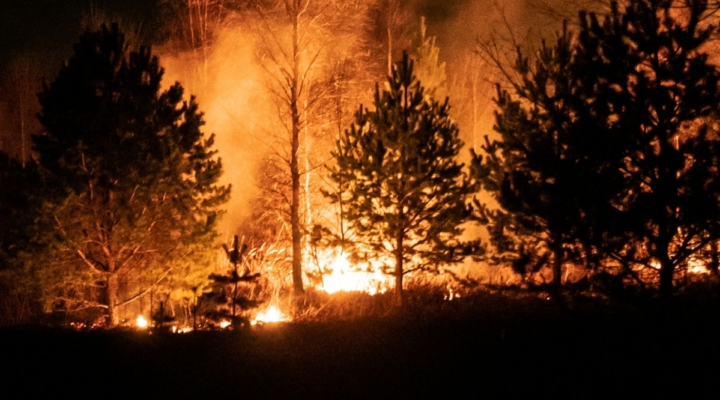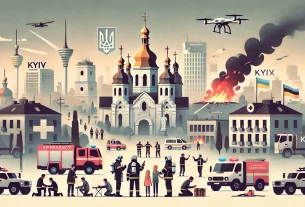“`html
North Carolina’s Uncontained Deep Woods Fire Sparks Urgent Mitigation Efforts
In North Carolina, a resilient blaze rages on, engulfing the deep woods with its seemingly relentless fury. As of now, this persistent wildfire remains 0% contained, prompting a sense of urgency among firefighting teams and local authorities. With each passing hour, the importance of strategic fire mitigation efforts becomes glaringly apparent.
The Unyielding Flames: Current Situation
Located in a remote section of North Carolina’s dense forestry, the ongoing wildfire has proved challenging to control. According to officials, the rough terrain combined with dry conditions have contributed to the fire’s rapid spread. Despite concerted efforts, the fire’s containment remains elusive, creating an urgent need for robust intervention strategies.
Challenges Faced by Firefighting Teams
- Difficult Terrain: The region’s dense foliage and rugged landscape complicate access for firefighting crews, hindering suppression efforts.
- Weather Conditions: High temperatures and low humidity currently dominate the area, exacerbating the situation by providing ample fuel for the fire.
- Resource Allocation: With multiple fire incidents across the nation, resource allocation has become competitive, which adds to the challenge of securing necessary firefighting tools and personnel.
Strategic Fire Mitigation Efforts Underway
Efforts to subdue the North Carolina woods fire are in full swing, with firefighting teams deploying a range of strategies and technologies.
Aerial Support and Surveillance
Aerial support has become a crucial component of the fire mitigation strategy. Air tankers are being utilized to drop retardants, creating buffer zones designed to slow the fire’s spread.
- Aerial Surveillance: Drones equipped with infrared cameras are being used to track the fire’s progress and identify hot spots which require immediate attention.
- Helicopter Water Drops: Helicopters equipped with buckets are performing water drops on the most aggressive flames, supplementing the efforts on the ground.
Collaborative Ground Efforts
On the ground, firefighters and volunteers work tirelessly to establish containment lines around the fire’s perimeters. This involves the creation of trenches and controlled burns which act as defensive barriers.
- Controlled Burns: Preemptive fires are set strategically to clear flammable vegetation, depriving the wildfire of its fuel supply.
- Hand Crews: Comprising both professional firefighters and trained volunteers, these teams use hand tools to physically remove combustible material from the fire’s path.
Community Involvement and Awareness
As efforts to combat the fire persist, community involvement plays a crucial role. Authorities and local organizations are pushing for greater public awareness and engagement.
Evacuation Plans and Safety Measures
Residents in potentially affected areas have been made aware of evacuation routes and emergency procedures. Preparation is key to ensuring the safety of lives and property.
- Community Meetings: Regular briefings keep residents informed about the fire’s status and recommended safety measures.
- Emergency Alerts: Authorities are using various channels including social media and SMS services to disseminate timely warnings and updates.
Volunteering and Support
A surge in volunteerism has been witnessed, with locals stepping forward to assist in various capacities. From logistical support to providing sustenance to firefighters, community spirit is more vital than ever.
The Road Ahead: Preventive Measures for the Future
While current efforts focus on containing the wildfire, long-term strategies are equally important. Investing in preventive measures will help avert similar crises in the future.
Forest Management and Climate Adaptation
Effective forest management practices are critical. This includes regular clearing of dead wood, strategic planting, and ecosystem monitoring. Additionally, re-evaluation of existing policies in line with evolving climate patterns will fortify our preparedness for future incidents.
Improved Infrastructure and Emergency Response
Upgrading infrastructure to enhance access to remote areas could significantly boost firefighting efficiency. Furthermore, cross-agency collaboration and technology integration can streamline emergency response strategies.
In conclusion, the North Carolina deep woods fire serves as a stark reminder of the unpredictability of natural disasters. While the flames remain unquenched, the collective resolve and proactive measures of authorities and communities evoke optimism. With sustained efforts and strategic planning, North Carolina is poised not only to contain the current crisis but also to bolster its resilience against future wildfires.
“`



